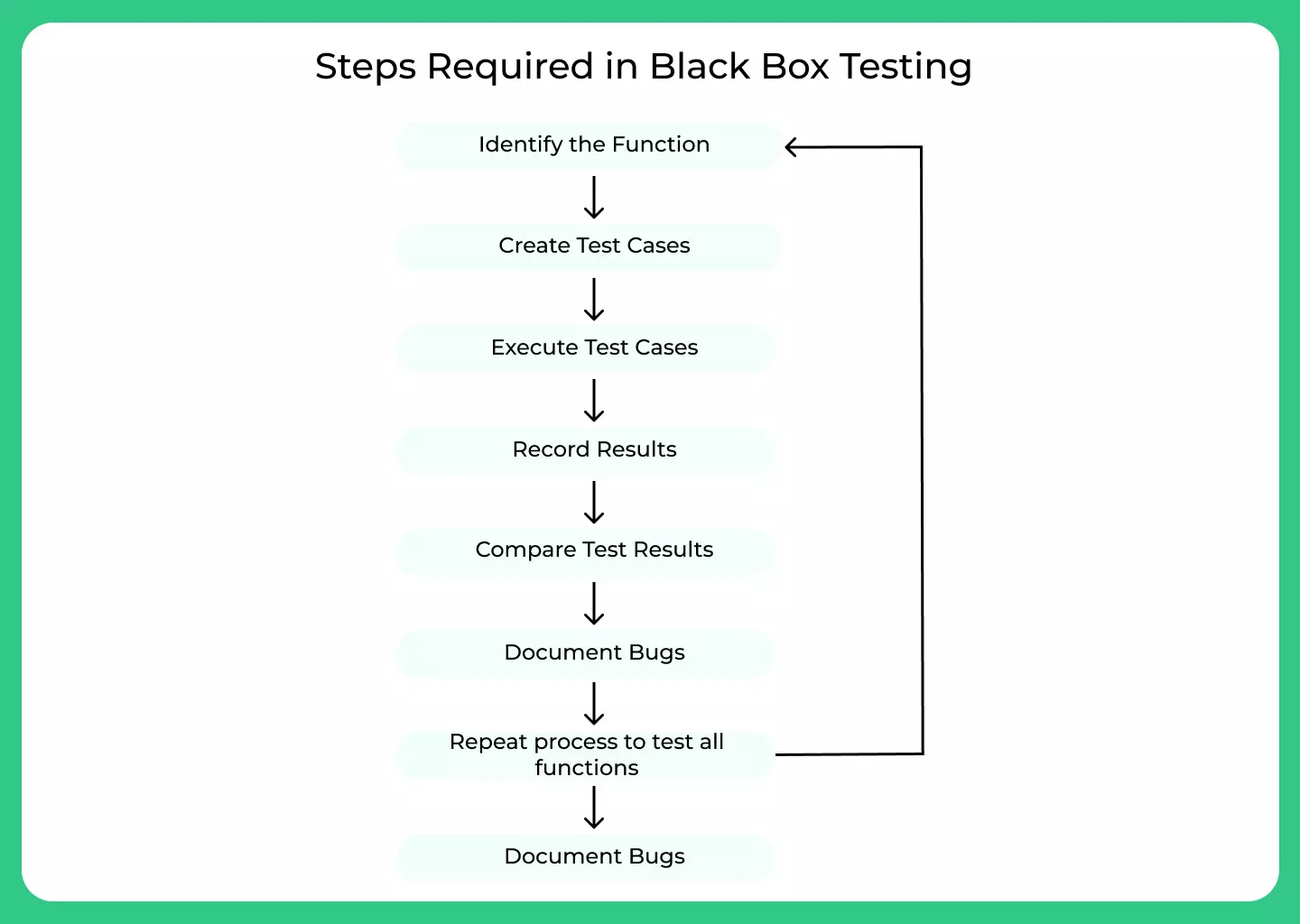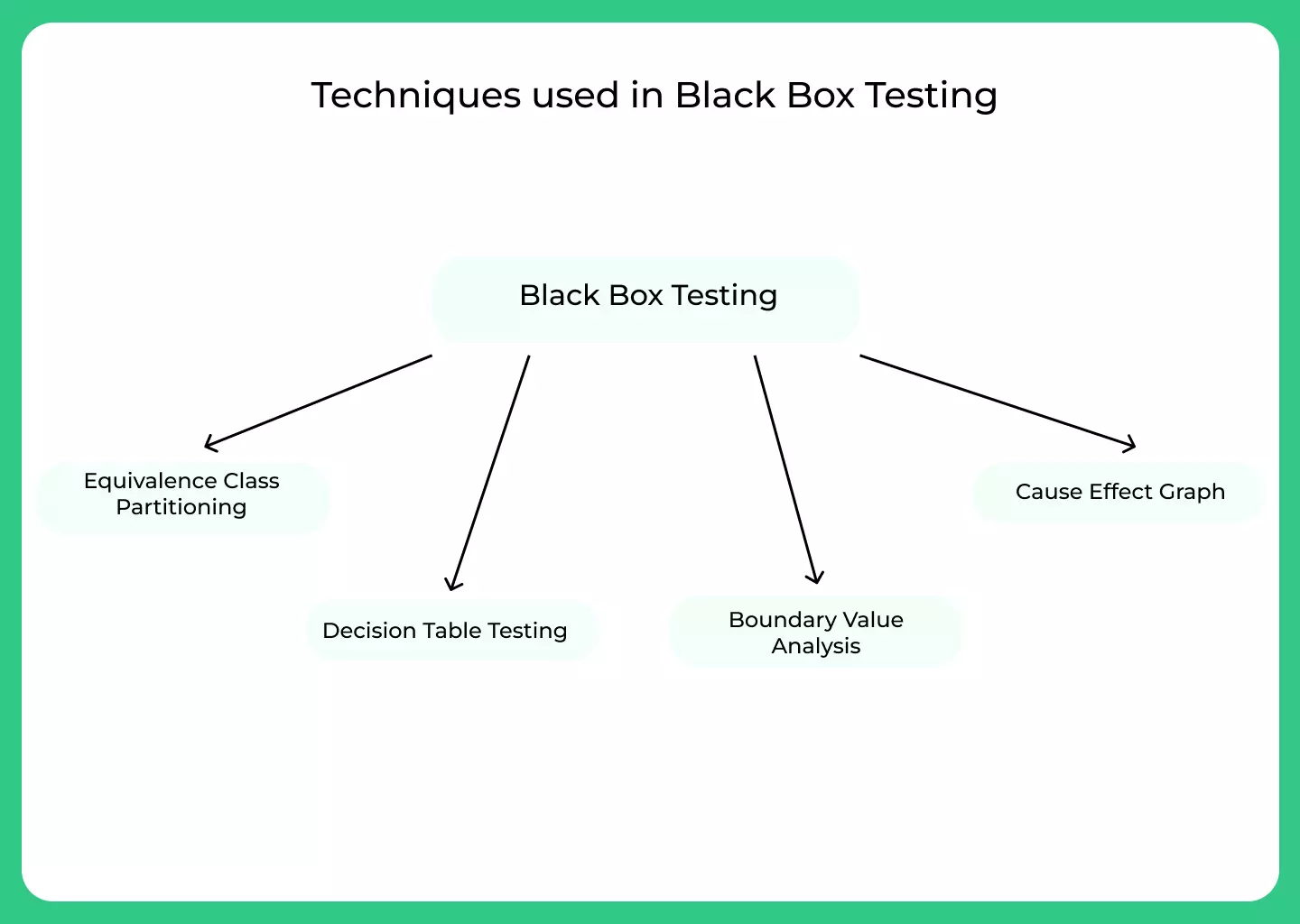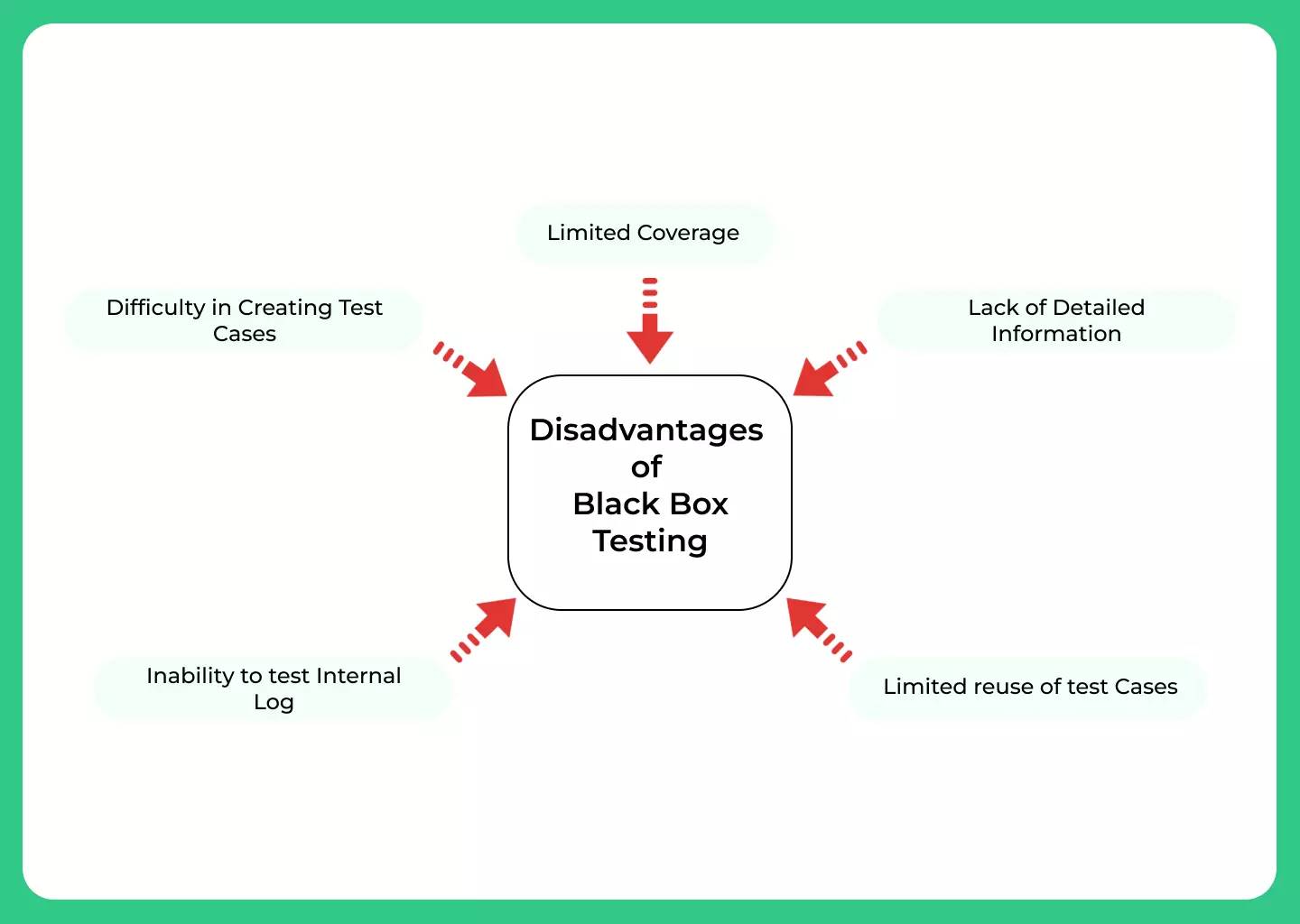0
Notifications Mark All Read
- Login
- Get Prime
Black Box Testing in Software Engineering
What is Black Box Testing?
Black box software testing is a method of testing in which the internal structure and implementation of the software being tested is not examined. Instead, the tester interacts with the software only through its external interface, such as its user interface or API.
This type of testing is based on the specifications and requirements of the software, and is used to ensure that the software behaves as expected and meets its functional requirements. Black box testing techniques include functional testing, acceptance testing, and regression testing.

Steps of Black Box Testing

- Identify the functionality to be tested.
- Create test cases based on the functionality.
- Execute the test cases on the system being tested.
- Record the results of the test cases.
- Compare the expected results with the actual results to determine if there are any discrepancies.
- Document any bugs or issues that are discovered during testing.
- Repeat the testing process until all identified functionality has been tested.
- Generate a report on the overall testing process, including any bugs or issues that were discovered and their status (e.g. fixed, deferred, etc.).
Types of Black Box testing:
Black Box testing has been divided into three main categories. These categories are:
- Functional Testing
- Non-Functional Testing
- Regression Testing
Functional Testing:
Functional testing in Black Box testing is a method of evaluating the performance of a software application by testing its inputs and outputs without any knowledge of its internal structure or code.
This type of testing is done to ensure that the software functions as intended and meets the requirements specified by the client or user. Examples of functional testing include testing for correct calculations, data validation, and user interface functionality.
Non-Functional Testing:
Non-functional testing in black box testing refers to testing the non-functional requirements of a system, such as performance, scalability, security, and usability, without knowledge of the internal structure or code of the system.
This type of testing is usually done after functional testing, and it helps to ensure that the system meets the requirements for how it should perform, operate, and behave in different scenarios. Examples of non-functional tests include load testing, stress testing, security testing, and usability testing.
Regression Testing:
Regression testing in black box testing is a method of testing in which a software system or application is retested after it has been modified or changed to ensure that the changes have not introduced any new bugs or defects into the system.
This type of testing is typically done by re-executing a set of test cases that were previously used to test the software. The goal of regression testing is to ensure that changes made to the software have not had any negative impact on its functionality or performance.
Techniques used in Black Box Testing

Equivalence Class Partitioning:
Equivalence class partitioning is a technique used in software testing to divide the input space of a software system into a set of partitions or groups, called equivalence classes.
This approach helps testers identify and focus on the most important inputs and reduce the number of test cases needed to achieve a high level of coverage. The goal is to find the minimum set of test cases that will exercise all the different behaviours of the system.
Boundary Value Analysis:
Boundary value analysis is a technique used in software testing to identify and test the input values that fall on the edge of the input domain.
The goal of boundary value analysis is to identify and test these values to ensure that the system is robust and behaves correctly when faced with these inputs. This technique is often used in conjunction with other testing methods, such as equivalence partitioning and decision table testing.
Cause Effect Graph:
Cause-effect graph is a software testing technique that involves specifying the causes (input conditions) and effects (output conditions) and producing a Cause-Effect Graph, and designed test cases.
Causes are the input conditions and effects are the output conditions. The causes and effects are represented using Boolean graphs.
Decision Table Testing :
Decision table testing is a technique used in software testing to identify and test all the possible combinations of inputs and their corresponding outputs. It is a structured way to organise test cases based on the logical relationships between inputs and outputs
This technique is often used in conjunction with other testing methods, such as boundary value analysis and equivalence partitioning, to provide comprehensive testing coverage.
Advantages of Black Box Testing
Disadvantages of Black Box Testing

Prime Course Trailer
Related Banners
Get PrepInsta Prime & get Access to all 200+ courses offered by PrepInsta in One Subscription
Get over 200+ course One Subscription
Courses like AI/ML, Cloud Computing, Ethical Hacking, C, C++, Java, Python, DSA (All Languages), Competitive Coding (All Languages), TCS, Infosys, Wipro, Amazon, DBMS, SQL and others

 0
0